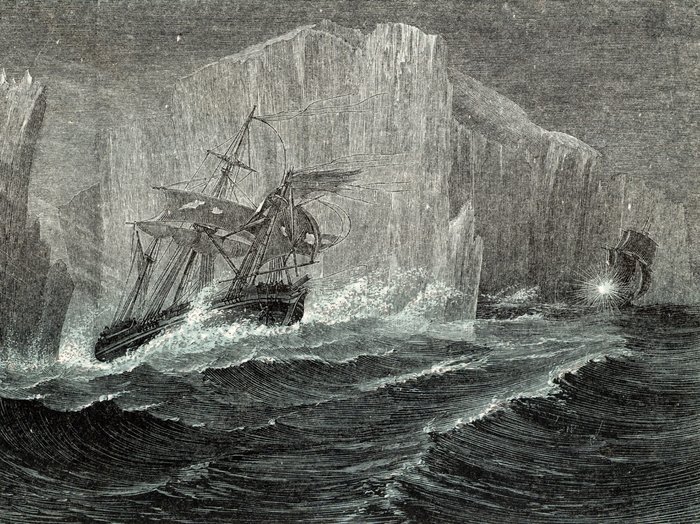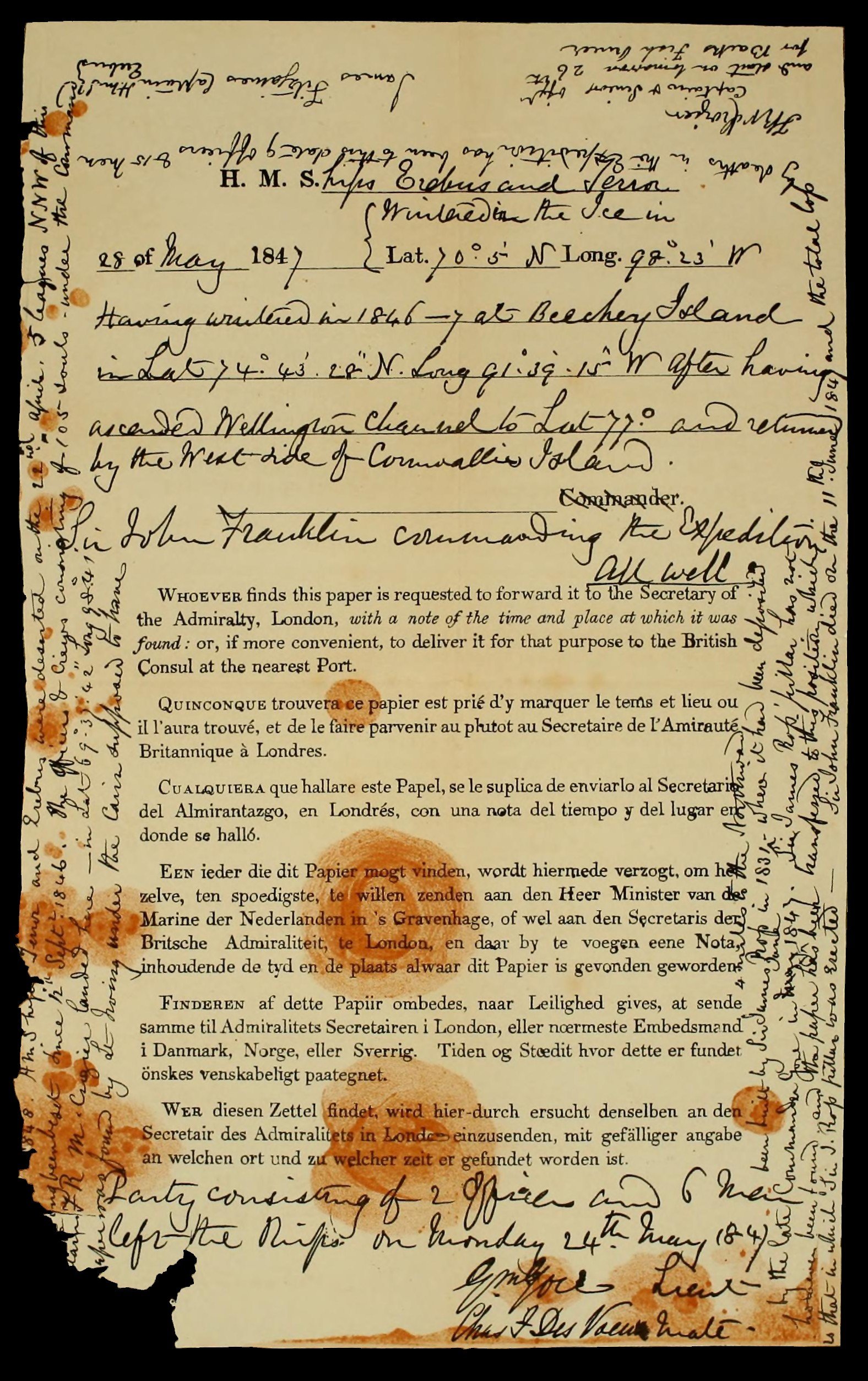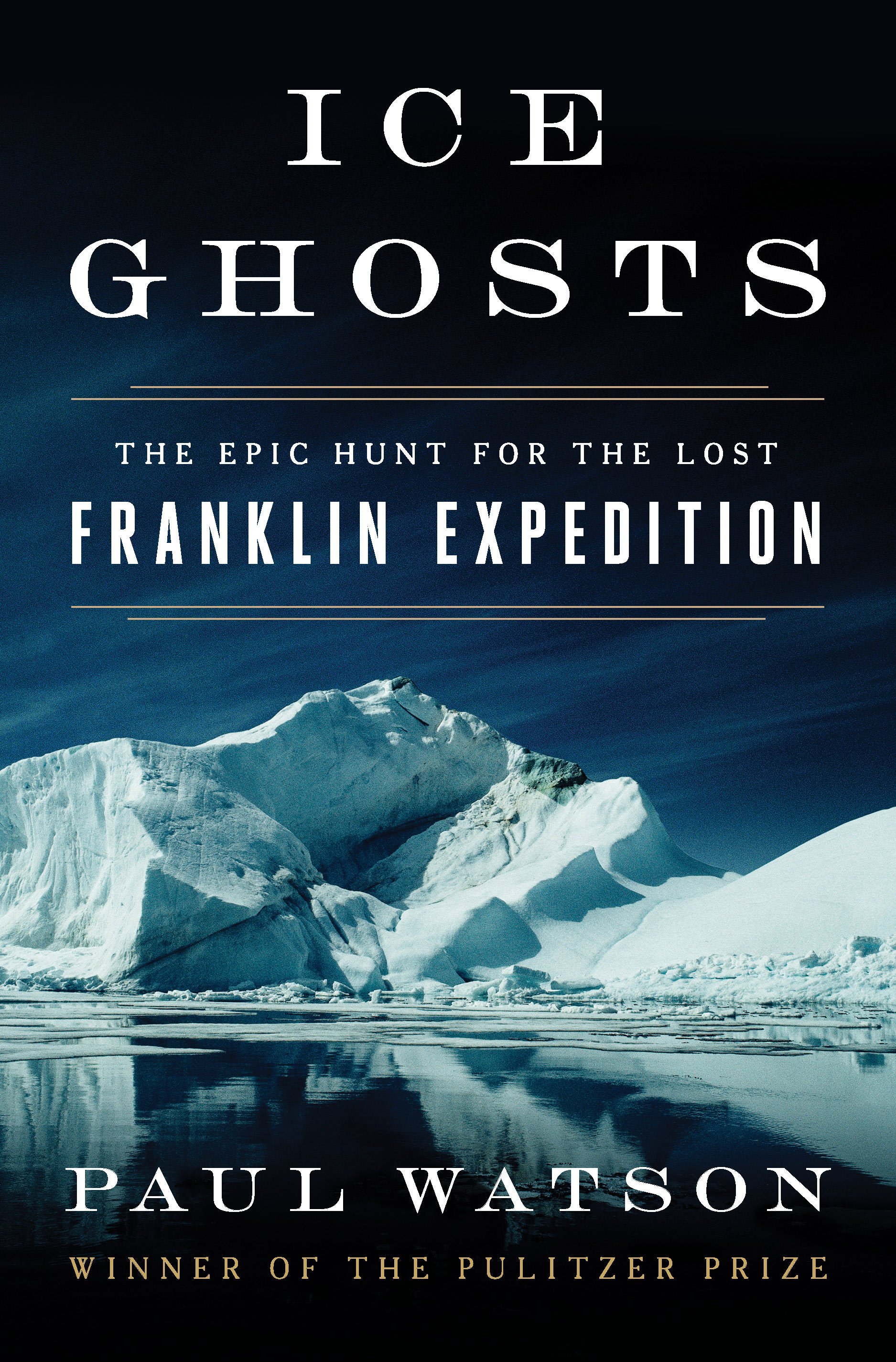Arctic exploration reached a fever pitch in the mid 1800s. The East India Company had solidified its foothold in the overland Easterly direction. Now Britain, with vast swaths of territory in Canada, wanted to find the fabled Northwest Passage – a shorter shipping route to bring back goods from the east and a way to avoid the treacherous Cape Horn. The area was one of the last unmapped on the globe and called to the adventurous seafarers and scientists.
Sir John Franklin had been to the Arctic before, and returned home to England safely. No longer a young man, he had to convince the Royal Navy to send him on this expedition to finally trace a route to the Bering Strait. They set out with two ships and two years worth of supplies, three if they had to stretch it. And it was not unusual that ships got stuck in the ice during the winter months and crews had to wait it out.

But when no word of the Franklin crew made it back to England for more than two years, Lady Franklin and friends began to worry. They should have had some note from a whaler or merchant ship who had seen them. It took years for lady Franklin to convince the Royal Navy to go looking for her husband and the crew of the HMS Erebus and HMS Terror. They would never be found alive.
The Franklin Expedition gained legendary status over the years, prompting wild theories and speculation. It also spurred on generations of distrust between foreigners and the Inuit people. The Inuit had oral histories that, when pieced together, formed a fairly clear picture of the crew’s final months, but the English didn’t know how to interpret them.
Two paths crossing in the winter void finally broke the obstinate silence surrounding the Franklin Expedition’s disappearance. That historic turning point arrived in 1854, when physician and fur trader John rae had a serendipitous encounter, in the middle of nowhere, when an Inuk hunter. Lady Franklin had been trying for months to persuade Rae to look where dissident voices, and the paranormal, had convinced her Erebus and Terror could be found. ~Pg. 146
In Ice Ghosts, Paul Watson lays out the case of the missing ships by starting with the mission itself. He tracks the preparations and the men aboard and follows them as far as their location was known. He includes probable landing points based on archaeological clues and old stories. The second half of the book focuses on the modern day efforts to find the ships. Here he talks to Inuit historians and Canadian archaeologists as they search for clues.

Finally, in 2014, a research team led by Parks Canada found a ship matching the description of the Erebus and Terror. They would have to wait until the next season to verify its identity. In 2016, Terror was found as well. Scientists are now trying to figure out why the crews would have abandoned the ships and made a break for it overland.
There remain many unanswered questions about the explorers. Only a few bodies have been found, and it is speculated they were the first to perish and the rest of the crew buried them. Some believe a few did survive and lived among the native people. Others claim there is evidence to suggest cannibalism took hold in the last dreadful days.
Watson pulls together all these threads into one narrative, making it a perfect primer on the Franklin mystery. Armchair detective and amateur scientist alike can whet their appetite on this book. The story can sometimes get lost among the minutiae of place names, which are difficult to keep straight. There is a map but it doesn’t trace all the routes outlined. A series of maps, showing the various operations, would have been helpful for a novice such as myself.
In a world where all the information seems readily available, it’s good to know there are still some classic unsolved mysteries to unravel.
My thanks to W.W. Norton for the review copy.
Hardcover: 384 pages
Publisher: W. W. Norton & Company; 1 edition (March 21, 2017)
Language: English
ISBN-10: 0393249387
ISBN-13: 978-0393249385
Product Dimensions: 6.5 x 1.4 x 9.5 inches


Hi Maria —
I don’t know very much about the expedition itself, other than a few news articles and then this book. I’m afraid most of the names were not familiar to me to begin with.
My suggestion would be to reach out to Paul Watson, the author, and ask him. He is on Twitter here: https://twitter.com/wherewarlives
Since he is a journalist, my guess is he will be able to answer you easily.
With apologies for the spelling gremlins. Ironic considering my aim to have ” correct” information. With apologies and now back to the book.
Just started Ice Gohsts by Paul Watson with great anticipation.
Page xxv shows William Bastiaanz. My question iis: should this have been William Bartentsz? If so correct in the next edition and it makes this read a more cautious one as ro facts.
How can I find out
There is a VERY brief mention of writing items when he writes about them packing supplies, but he didn’t go into that. It did make me wonder, though. What is the name of the book you are reading about it?
I think this is the expedition that had a printing press aboard,well used to keep the men from going crazy.
Regardless — I’m dying to read this book! Thanks for the review!